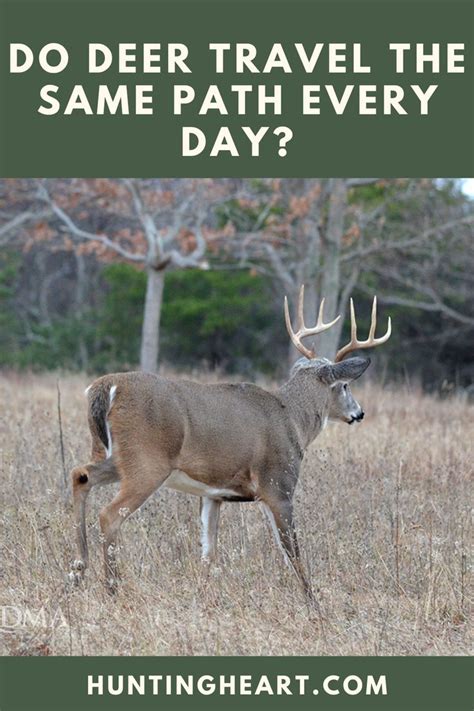How Long Do Deer Travel The Same Path Every Day
Ronan Farrow
Apr 05, 2025 · 3 min read

Table of Contents
How Long Do Deer Travel the Same Path Every Day? Understanding Deer Habits and Trails
Deer, known for their grace and agility, often follow established paths, creating well-worn trails through their habitat. But how consistent are these daily routes? The answer is: it depends. Several factors influence how long a deer will stick to a particular path.
Factors Affecting Deer Travel Patterns
Several factors contribute to a deer's daily travel patterns and the longevity of its chosen paths:
-
Food Sources: The most significant factor. If abundant food is available along a specific route, deer will likely continue using that path. Changes in food availability, due to seasonal growth or human intervention, will influence their route choices. A reliable food source will keep a deer on the same path for weeks, months, or even years, as long as the food remains accessible and plentiful.
-
Predators: The presence of predators heavily impacts deer movement. Deer are naturally cautious creatures, and will avoid areas known to harbor predators. If a predator attacks along a particular route, the deer will likely alter its path to avoid the danger zone. This can result in sudden and significant changes in their established trails.
-
Human Activity: Human interference, such as construction, logging, or increased human traffic, will dramatically impact deer travel patterns. Deer are highly sensitive to human activity and will quickly abandon routes that feel unsafe. A route regularly disrupted by humans might only be used for a few days or weeks, before the deer finds an alternative.
-
Breeding Season: During the rut (breeding season), bucks will travel much farther and more erratically than during other times of the year, often abandoning established trails to search for mates. Their usual paths may be temporarily disregarded, only to be resumed after the breeding season.
-
Seasonal Changes: Seasonal changes affect the availability of food and cover, leading to adjustments in deer travel routes. During winter, deer might concentrate in areas offering protection from the elements, while in summer, they might expand their range to access new food sources. This means a path favored during one season might be abandoned in another.
Predicting Deer Trails: A Difficult Task
While deer exhibit a degree of predictability in their movements, pinpointing exactly how long they will adhere to a specific path is challenging. The dynamic interplay of food sources, predator presence, human activity, breeding cycles, and seasonal variations makes their travel patterns complex and fluid. You might observe a deer using the same path for an extended period, but any number of factors could lead to a sudden shift in its routine.
Conclusion: Understanding the Variables
Instead of focusing on a definitive timeframe, it's more helpful to understand the influences that shape deer travel patterns. By recognizing these variables, we can gain a better appreciation for the flexibility and adaptability of these fascinating creatures. Their routes are not fixed, but rather, a reflection of their ongoing response to the ever-changing conditions of their habitat.
Featured Posts
Also read the following articles
| Article Title | Date |
|---|---|
| How Long Does Activated Carbon Last | Apr 05, 2025 |
| How Long Does It Take To Break In Chacos | Apr 05, 2025 |
| How Long Does Dental Sedation Last | Apr 05, 2025 |
| How Long Does Custody Court Last | Apr 05, 2025 |
| How Long Can I Go Without A Retainer | Apr 05, 2025 |
Latest Posts
-
How Long Does It Take To Drain A Pressure Tank
Apr 05, 2025
-
How Long Does It Take To Do A Muffler Delete
Apr 05, 2025
-
How Long Does It Take To Defrost A Rib Roast
Apr 05, 2025
-
How Long Does It Take To Cut Hair
Apr 05, 2025
-
How Long Does It Take To Correct Midline
Apr 05, 2025
Thank you for visiting our website which covers about How Long Do Deer Travel The Same Path Every Day . We hope the information provided has been useful to you. Feel free to contact us if you have any questions or need further assistance. See you next time and don't miss to bookmark.
